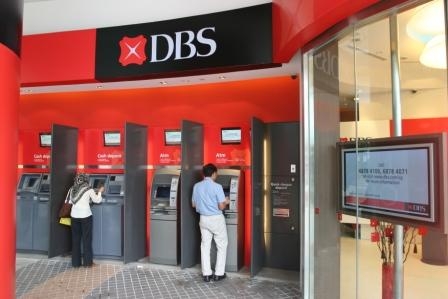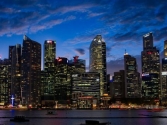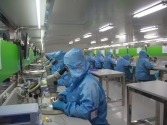
DBS faces $1.3b loan losses
Its SME exposure is around $40b.
DBS' credit costs have likely peaked to $1.3b this year before declining next year, said Jefferies.
The research house explains that DBS' asset quality continues to deteriorate with non-performing assets (NPA) increasing QoQ by 12%. While half of the increase is from the commodity sector, the other half is from SME. Hence, it notes that it doesn't get the 'confidence' that absolute NPA has peaked.
However, Jefferies said that chunky provisioning expenses have probably peaked and subsequent ones will be granular and possibly from non-commodity segment.
Here's more from Jefferies:
We pencil in FY16 credit costs at S$1.3B (S$972 is reported for 9MFY16). The key assumption we make is that chunky commodity sector NPA formation is likely in the final phases.
Management commentary has suggested half of new NPA formation is from commodity segment. So, if we project it for credit costs, about S$650M in FY16 is coming from this segment and is likely to decline next year.
There has been some reduction in commodity exposure (S$14B in Sep 2016 versus S$21B in Sep 2015) and O&G exposure (S$20B in Sep 2016 (ex-Swiber which was S$700M exposure) versus S$22B in Sep 2015) even if oil prices are unchanged YoY and the broader Bloomberg Commodity Index is down a meagre 3% in the same period.
So, it boils down to our assumption around the extent of NPA formation in the SME segment. Data is scant but we rely on our earlier work to get a sense of DBS SME exposure.
Till 2013, the group disclosed its SME exposure at S$19B, up from 4B in 2011. After that, the exposure is merged under “corporate exposures”. So, we assume that it has grown at a similar pace till 2015 before asset quality worries started to surface.
That way, we are talking of S$40B exposure. Based on disclosed SME revenue of S$1.5B for the segment, revenue on assets works out to about 3.7% which is in the ballpark range of SME assets.
During GFC, segments like manufacturing and general commerce (which we associate with SME) had shown peak NPL ratio of 5%. Assuming the same set up this time, gross NPA will be about S$2B.
With property as collateral at 50% LTV (and enough government cushion for soft landing of property prices), likely SP charge is in the range of S$1B, spread over a couple of years. Some of this would already have been accounted for.
So, combined with residual SP charge from commodity/O&G, about S$500M from SME and about S$150M GP (based on 1% GP charge for 5% loan growth in FY17), we get to credit cost of S$1.1B in FY17. As such, we make the judgement that credit costs will peak this year.
























 Advertise
Advertise










